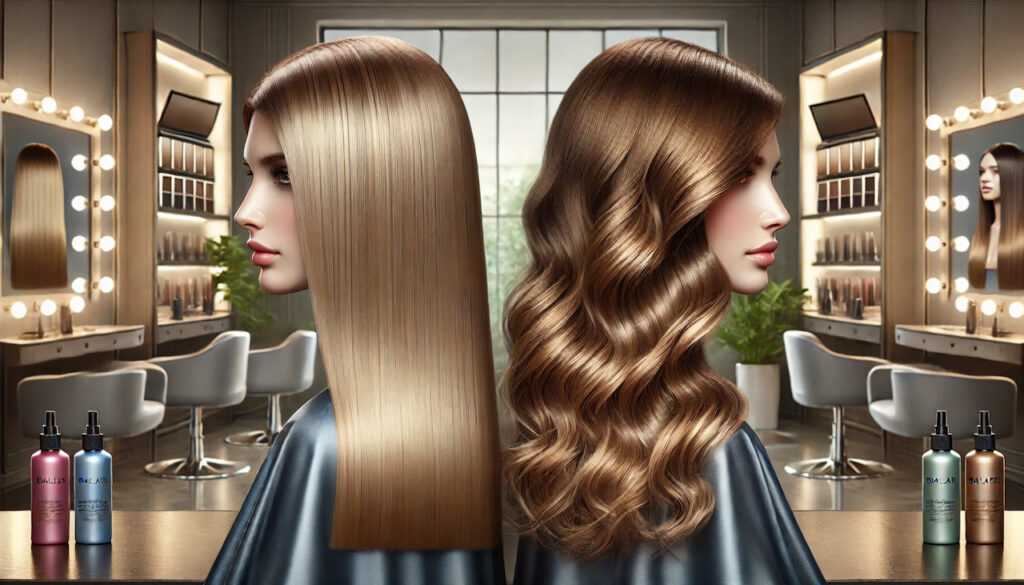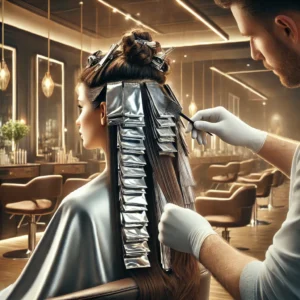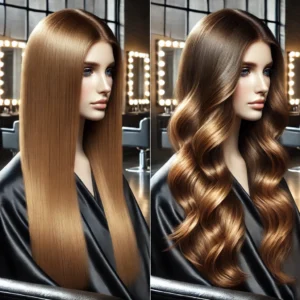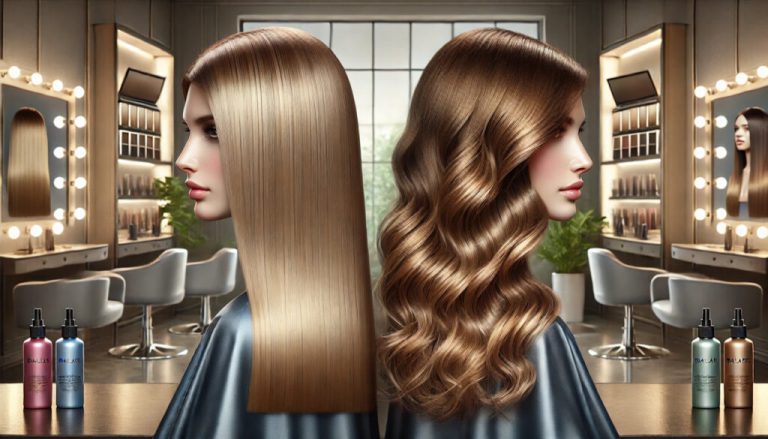Mastering Hair Highlights: A Complete Comparison of Foiling and Balayage Techniques
When exploring transformative hair highlighting options, foiling and balayage stand out as two of the most popular and effective methods for enhancing your hairstyle. Each technique aims to enrich your hair with stunning highlights, yet they differ significantly in their application processes and the visual outcomes they produce. Foiling is a traditional technique where specific strands of hair are skillfully wrapped in foil after applying a lightening agent or dye. This meticulous approach allows for exceptional accuracy in highlight placement, making it an optimal choice for clients who seek sharp, well-defined results that can elevate their overall look.
The precision of this technique yields a highly polished appearance, ideal for individuals desiring a dramatic change or a bold contrast against their natural hair color. On the other hand, balayage provides a more artistic and free-flowing method, where the stylist hand-paints the color onto the hair, focusing on the mid-lengths and ends while leaving the roots darker to create a natural and sun-kissed effect. The gradual color transitions associated with balayage typically necessitate less frequent maintenance, making it a favorite for those who appreciate a relaxed, lived-in look that evolves beautifully as time goes on.
Grasping these fundamental differences is vital when striving to make a well-informed choice that corresponds with your personal style and daily lifestyle needs.

Key Considerations for Choosing Between Foiling and Balayage
- Foiling entails wrapping sections of hair in foil for precise, uniform highlights, while balayage employs a freehand technique that results in a more organic, sun-kissed appearance.
- Foiling provides the advantage of achieving consistent and controlled results while effectively lightening hair shades; however, it may lead to noticeable regrowth and can present a more structured look.
- Conversely, balayage is celebrated for its low-maintenance qualities and seamless integration with your natural hair color, although it may result in uneven color distribution and could require regular touch-ups.
- For individuals with dark, thick, or coarse hair, foiling can be especially beneficial, particularly for achieving a bold, high-contrast aesthetic.
- In contrast, balayage is often best suited for those with fine or thin hair, providing a subtle and blended effect that minimizes the visibility of regrowth.
- To maintain foiled highlights, it’s essential to utilize color-safe products, limit excessive heat styling, and schedule regular appointments with your stylist for necessary touch-ups.
- For balayage, it’s recommended to use color-safe products, reduce sun exposure, and maintain regular toning sessions with your stylist to keep your look vibrant and fresh.
- When deciding between foiling and balayage, evaluate your desired aesthetic, hair type, maintenance preferences, and budget to make an informed choice based on a comprehensive understanding of each technique’s benefits and drawbacks.
 Unveiling the Advantages of Foiling: Why This Highlighting Technique Excels
Unveiling the Advantages of Foiling: Why This Highlighting Technique Excels
Foiling comes with compelling advantages that make it a preferred choice for individuals seeking vibrant and eye-catching highlights. The primary advantage of this technique is its unmatched precision; each hair section is methodically wrapped in foil, allowing for meticulous color application exactly where it’s wanted. This level of precision is particularly advantageous for those with darker hair who wish to achieve significant lift or a strong contrast effect that makes their highlights pop.
Moreover, the uniform finish produced by foiling makes it an excellent choice for anyone desiring a sophisticated and polished look. However, it is important to acknowledge the potential downsides of this technique. The foiling process can be quite time-consuming, often taking several hours, especially for individuals with long or thick hair. Additionally, the foils can trap heat, which intensifies the lightening process, potentially leading to hair damage if not monitored closely. If you lead a busy lifestyle or prefer a lower-maintenance hair care routine, you may find that foiling requires more upkeep than you are ready to commit to.
Understanding the Benefits and Limitations of Balayage
Balayage boasts numerous benefits that appeal to many individuals seeking a natural, effortless hairstyle. One of the most significant advantages of this technique is its low-maintenance nature. Since balayage highlights are designed to mimic natural sun exposure, they grow out gracefully, avoiding harsh lines or noticeable regrowth. This characteristic translates to fewer salon visits for touch-ups, making balayage an excellent choice for those with busy lifestyles who appreciate a more relaxed approach to hair care.
However, it’s crucial to recognize that balayage may not provide the same level of contrast as foiling. If you are specifically in search of bold, dramatic highlights, you might discover that balayage does not meet your expectations in terms of vibrancy. Additionally, the effectiveness of balayage heavily relies on the stylist’s skill and artistry. Therefore, it is essential to select an experienced professional who can accurately interpret and execute your vision to achieve the results you desire.
Determining Which Hair Types Benefit Most from Foiling Techniques
Foiling is particularly advantageous for specific hair types and textures. Individuals with thick or coarse hair often find that foiling creates vibrant highlights that distinctly stand out against their natural base color. The precision offered by foiling enables targeted color placement, significantly enhancing the hair’s inherent texture and dimension. Furthermore, individuals with naturally dark hair seeking substantial lift or contrast often discover that foiling is the most effective method for achieving their desired look.
Even those with fine or thin hair can gain from foiling, as this technique can create an illusion of volume and depth. By strategically placing highlights throughout the hair, you can achieve a dimension that allows your locks to appear fuller and more dynamic. However, if your hair is excessively damaged or fragile, it’s advisable to consult with your stylist before opting for foiling, as the process can be taxing on delicate strands and may exacerbate existing issues.
 Exploring Ideal Hair Types for Balayage Techniques
Exploring Ideal Hair Types for Balayage Techniques
Balayage is celebrated for its versatility and adaptability, making it a favored choice for a wide range of hair types. If you possess naturally wavy or curly hair, this technique can beautifully enhance your texture while providing an effortlessly chic sun-kissed appearance. The freehand application method allows for smooth transitions between colors, making it particularly suited for those desiring an organic look that complements their natural waves.
Straight hair also benefits from balayage, as it introduces movement and dimension without overwhelming the base color. For individuals with fine hair, balayage can create an illusion of thickness by adding depth through artistically placed highlights. However, if your hair is very dark and you’re aiming for a dramatic change, bear in mind that achieving the desired brightness with balayage may require multiple sessions in comparison to the immediate results typically associated with foiling.
Effective Techniques for Maintaining Foiled Highlights
To keep foiled highlights vibrant and fresh, a commitment to proper hair care is essential. One of the most critical aspects is utilizing sulfate-free shampoos and conditioners specifically crafted for color-treated hair. These specialized products help preserve your highlights and prevent fading and damage that often accompany regular washing.
Incorporating a deep conditioning treatment into your hair care regimen at least once a week is also vital for maintaining hydration, nourishment, and overall hair health. Regular salon visits are necessary to uphold the integrity of foiled highlights. Depending on your hair growth rate and how noticeable your regrowth may appear, you might require touch-ups every 6 to 8 weeks. During these appointments, your stylist can refresh your highlights and ensure they remain vibrant and seamlessly blended with your base color. Lastly, it’s wise to protect your hair from heat damage by applying heat protectants prior to using styling tools and minimizing exposure to high temperatures whenever possible.
Optimal Practices for Caring for Balayage Highlights
Maintaining balayage highlights is generally simpler and requires less effort compared to preserving foiled highlights due to their inherently low-maintenance quality. Opt for color-safe shampoos and conditioners that nourish your hair without stripping away color to maintain the vibrancy of your balayage. Choose products enriched with natural oils or proteins to help sustain moisture levels while enhancing overall shine.
Although balayage necessitates fewer touch-ups than foiling, regular salon visits remain important to keep your color looking fresh and vibrant. Depending on your hair growth rate and the extent of lightening you wish to achieve over time, consider scheduling appointments every 8 to 12 weeks for a refresh. During these visits, your stylist can assess your hair’s health and make necessary adjustments to maintain that lovely, sun-kissed effect you desire.
 Choosing the Right Highlighting Technique: A Comparative Analysis of Foiling and Balayage
Choosing the Right Highlighting Technique: A Comparative Analysis of Foiling and Balayage
Ultimately, your choice between foiling and balayage should reflect your unique style preferences and lifestyle considerations. If you seek bold, defined highlights with a polished finish, foiling may be the most suitable option for you. This technique allows for precise color placement and can create stunning contrasts that make a bold statement.
Conversely, if you prefer a more natural look that demands minimal upkeep, balayage might be the ideal technique for you. This method offers versatility and adaptability for various hair types while delivering an effortlessly chic aesthetic that matures beautifully over time. When making your choice, consider your hair type, desired maintenance level, and overall visual aesthetic. Both foiling and balayage present unique benefits and challenges. By comprehensively understanding these differences and evaluating your style alongside your lifestyle requirements, you can confidently select the technique that aligns best with your aspirations. Whether you favor the precision of foiling or the effortless allure of balayage, both methods can elevate your look and enhance your confidence.
Your Frequently Asked Questions Answered
What Is Involved in the Foiling Technique for Hair Coloring?
Foiling is a highlighting technique that involves isolating sections of hair and wrapping them in foil before applying color. This method facilitates precise placement of highlights, resulting in a more uniform and controlled color effect throughout the hair.
What Characterizes the Balayage Highlighting Technique?
Balayage is a highlighting method where color is hand-painted directly onto the hair to create a natural, sun-kissed appearance. This technique allows for softer transitions and a more blended look, resulting in highlights that grow out seamlessly and naturally over time.
How Do Foiling and Balayage Differ in Their Approach?
Foiling generates a more uniform, all-over color effect with precise highlight placement, while balayage offers a more natural, sun-kissed look characterized by softer, blended highlights. Typically, foiling requires more upkeep due to visible regrowth, whereas balayage tends to grow out more smoothly and necessitates fewer touch-ups.
Which Highlighting Technique Is Most Suitable for My Hair Type?
The decision between foiling and balayage depends on your desired aesthetic and maintenance preferences. If you prefer a uniform color with precise highlight placement, foiling may be ideal. Conversely, if you desire a natural, sun-kissed look with softer highlights and less visible regrowth, balayage is likely the better option. Consulting with a professional hairstylist can provide tailored guidance based on your hair type and desired outcomes.
Presented By: Hair Foiling
The Article: Highlighting Techniques: Foiling vs. Balayage Explained appeared first on Amitys Hair Salon.
The Article Foiling vs. Balayage: Key Highlighting Techniques Explained Was Found On https://limitsofstrategy.com
References:
Foiling vs. Balayage: Key Highlighting Techniques Explained




